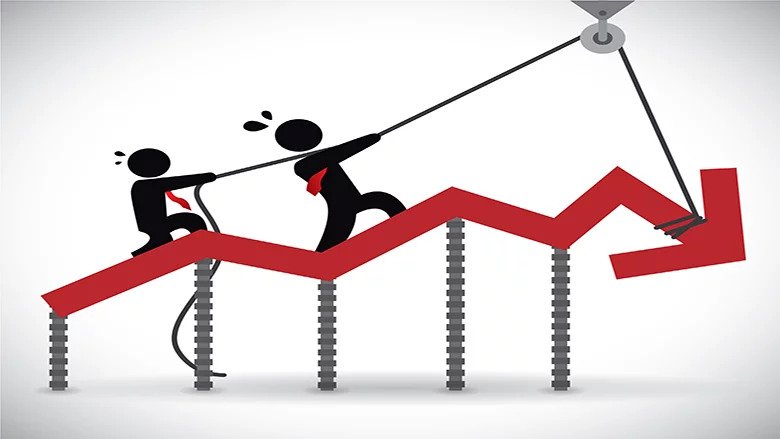China’s post-pandemic recovery shows signs of losing steam, “imminent” multiple measures to boost growth and recovery likely? What have analysts agreed and disagreed on in this matter? And some highlights about the Chinese economy as it stands now.
It’s becoming clearer that China’s economy did bounce back from Covid, but not as rapid and strong as markets expected. Analysts are watching and thinking: if more data disappoint, will Beijing announce measures to revive economic recovery, and if so, how aggressively.
China is considering at least a dozen stimulus measures including cuts to interest rates to support areas such as real estate and domestic demand, Bloomberg reported on June 12, citing unnamed sources. The plan is still being finalised but announcements are expected soon, it added.
Let’s take a quick look back…
One month ago, newly released data reinforced an anticipation shared by many analysts: Chinese economy has failed to fully recover after removal of zero-Covid policies, industrial output falls short of expectation, recovery is in doubt.
Two weeks ago, after more data came out to disappoint, analysts were heard saying that “confidence is a big problem” , that China’s recovery is losing steam, as evidenced in weak property sales, industrial output and consumption. Indeed, Chinese exports contracted more than expected in May on weaker global demand for the country’s goods at a time when China was trying to mount a strong recovery.
More measures are anticipated if new data disappoints.
The PBOC lowered a key interest rate on June 12 for the first time in 10 months. The rare move of China’s central bank is seen as a response to concerns about the deflationary risks and mounting debt payment pressure by local governments, says Dow Jones. The seven-day reverse repo rate, medium-term lending facility rate, reflects commercial banks’ liability costs.
It is a move to help restore market confidence, signalling possible easing for longer-term rates over the next week and beyond, and adding to the case for urgent policy stimulus to sustain growth, Reuters said.
Some believe it could be the first of a series of measures to boost recovery, including further and broader rate cuts combined with potential fiscal stimulus. Barron’s suggests the contemplated measures are aimed at achieving the country’s 5% growth target for the year and stabilising its economy amid global uncertainties.
“Analysts see the move as an indication officials recognize the damage the economy has suffered over the past couple of years—the challenges included the pandemic, harsh restrictions to control Covid-19, and a crackdown on the property and technology sectors—and the hurdles blocking a stronger recovery,” it says.
Rate cuts may give stock markets a near-term lift, but industrial upgrades remain key for the long-term growth outlook, ANZ says in a note. “China’s slowdown is partly due to policymakers’ intention to push ahead with structural reforms,” it explains, and “monetary easing is merely a tentative measure to engineer a ‘soft landing’ for the traditional economy”.
Agreed and disagreed
Economists and strategists agree that Beijing will move to revive growth, but disagree on how aggressive the moves will likely be.
Some predict the stimulus will be constrained and disappoint the market, pointing at the lack of confidence, both among consumers and companies, behind weak domestic consumption, which holds the key to recovery this time.
As some other investors see it, though, the lacklustre demand, weak recovery, lack of confidence and significant government efforts to shore up growth “represents an opportunity”, Barron’s reported , citing Richard Schmidt, global equity manager at Harding Lovener. The return of confidence followed by robust recovery is “just a matter of time,” he told Barron’s.
Some of the measures taken or contemplated as reported by media:
- Interest-rate cuts to lower the borrowing costs for businesses and consumers
- Support for property sector to revive investment and consumption, including easing restrictions on real estate purchasing and car ownership
- Fiscal stimulus to increase government spending and support key sectors, such as infrastructure, employment, and supply chains
- Capital market reforms to enhance financing efficiency and innovation, such as supporting domestic firms to list in Hong Kong and promoting offshore listings by qualified platform companies
(Sources: Reuters, Bloomberg, World Economic Forum and IMF websites)
Still, the success of China’s recovery will depend on the effectiveness of implemented measures and the ability to address underlying structural issues.
Some highlights of China’s economy
China’s economy is facing some challenges in 2023 due to the COVID-19 pandemic and the slowdown in global demand, but also showing some signs of recovery and resilience, thanks to its domestic consumption and policy stimulus. Here are some key points:
- China’s exports tumbled 7.5% year-on-year in May, while imports contracted 4.5%, indicating a grim outlook for global demand, especially from developed markets (Reuters)
- China’s economy grew faster than expected in the first quarter of 2023, thanks to robust services consumption and a backlog of orders following years of COVID disruptions(IMF)
- China’s growth in 2023 is expected to be 5.4% according to a survey of economists, close to the official target of 5%
- China is considering at least a dozen stimulus measures to support areas such as real estate and domestic demand, including interest-rate reductions, property support, fiscal stimulus, and capital market reforms (CNBC)
So, PBOC’s rate cut earlier this month may send a signal about policy makers’ intention to support growth, in some analysts’ words, and Beijing may act swiftly to stabilise the economy, it is still unclear whether rate cuts and stimulus will create “significant momentum in the economy”, Barron’s pointed out.
That kind of momentum “could be what is needed to convince Chinese consumers and companies to start spending more freely”.
